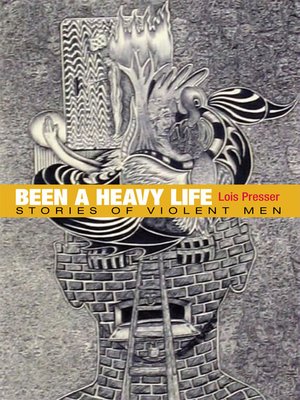Been a Heavy Life
ebook ∣ Stories of Violent Men · Critical Perspectives in Criminology
By Lois Presser

Sign up to save your library
With an OverDrive account, you can save your favorite libraries for at-a-glance information about availability. Find out more about OverDrive accounts.
Find this title in Libby, the library reading app by OverDrive.



Search for a digital library with this title
Title found at these libraries:
| Library Name | Distance |
|---|---|
| Loading... |
In this groundbreaking work, Lois Presser investigates the life stories of men who have perpetrated violence. She applies insights from across the academy to in-depth interviews with men who shared their accounts of how they became the people we most fear—those who rape, murder, assault, and rob, often repeatedly. Been a Heavy Life provides the discipline of criminology with two crucial frameworks: one for critically evaluating the construction of offenders' own stories, and one for grasping the cultural meta-narratives that legitimize violence. For social scientists generally, this book offers a vivid demonstration of just how dynamic and contingent self-narratives are.|
Contents Foreword by Bruce A. Arrigo Acknowledgements 1. Self and Story 2. Offender Identities, Offender Narratives 3. Thinking about Research Effects 4. Research Methods When Research Is Being Researched 5. Reform Narratives: Return of the Good Self 6. Stability Narratives: Never a Bad Self 7. Elastic Narratives: Creative Integration 8. Tales of Heroic Struggle 9. The Situated Construction of Narratives 10. The Power of Stories Notes References Index 5 Acknowledgements A great many people made this book possible. My helpers are dear friends and teachers: Deidre Ashton, Julia Chu, Todd Clear, Marilyn Croman, Reuben Danzing, Rob Danzig, Russel Durst, Eric Fieldman, Bernadette Fiore, Emily Gaarder, Elaine Gunnison, Cyndi Hamilton, Brooke Judkins, David Lundgren, Bernice Mahler, Shadd Maruna, Paul Mazerolle, Kumiko Mitarai, Judy Montville, Caroline Nicholl, Sharyn Roach Anleu, Michelle Rosen, Joyce Sacco, Suhith Wickrema, and Anthony Zitrin. They include my financial supporter, the Office of Research and Advanced Studies at the University of Cincinnati, and my intellectual comrades in the Department of Sociology at the University of Tennessee. Joey Presser was a constant source of encouragement and sometime emergency assistance. Ami, Laura Retyi-Gazda, my friends in Frontrunners of Cincinnati, and my allies in the March for Justice of Cincinnati, made life in Cincinnati worthwhile. Administrators and staff of four different agencies generously allowed my work to interfere with theirs. Thanks to Ed Latessa for his kindness. Thanks to Pat Van Voorhis, John Wooldredge, and Frank Cullen for modeling integrity and excellence in research. Thanks to Lorraine Mazerolle for her boundless intellectual curiosity and insight. Thanks to Robert McConaughy for his empathy and wisdom about all things. I am especially grateful to my three parents, who live in my heart. My father Alex Presser, my natural mother Hilda Winnick Presser, and my adoptive mother Helen Presser valued people and education and influenced me to do the same. Finally, the book stands on the stories of 27 men, for whom I wish peace. 6 Been a Heavy Life 7 Foreword Bruce A. Arrigo Ethnographic studies of "dangerous men" have generally taken us behind bars. Erving Goffman's (1961) arresting critique of the confinement setting as a generative milieu for the exercise of power helped to spawn a series of monograph-length works recounting life, death, and survival behind prison walls (e.g., Clemmer, 1958; Toch, 1977; Jacobs, 1978; Sykes, 1971). A second wave of penological analysis, still concerned with "everyday experience" behind bars, challenged the correctional system as an extension of the state's regulatory ambit. For example, Irwin's (1970, 1985) studies of the felon and the jail respectively ushered in a new era of incisive commentary. Crime control as industry was understood to function as a gulag (Christie, 1993), and the American corrections project generally was recognized as one of doing harm (Clear, 1994). More recent studies have continued the...







